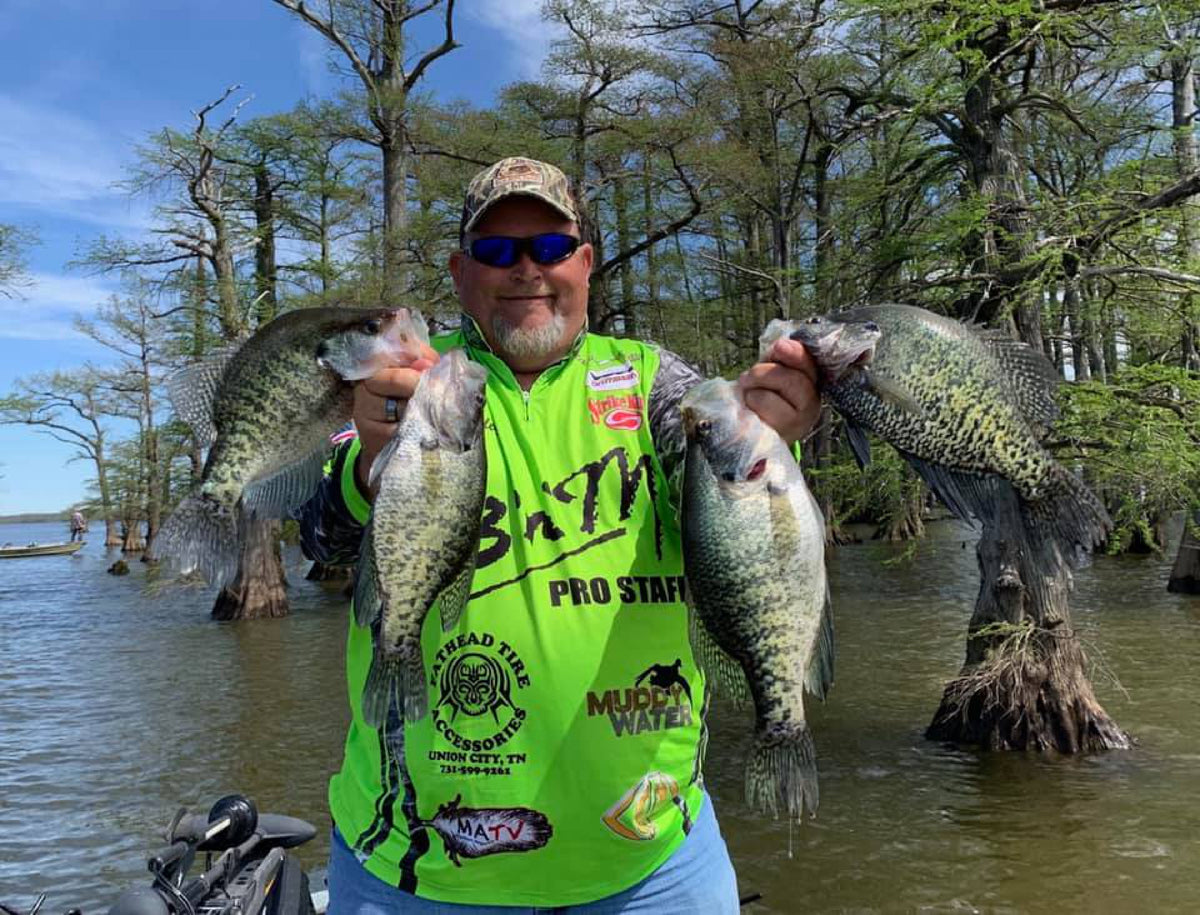B’n’M Pros on Finding Fall Crappie
B’n’M Pros on Finding Fall Crappie
By Phillip Gentry
Most anglers really start to notice the change from summer to fall in the evenings. Although the trees are still full of leaves, the afternoon sounds change over from cicadas and buzzing insects to the chirping of crickets. The heat and the humidity are starting to loosen their grip and there’s a distinct coolness in the air.
It’s also the time that a lot of crappie anglers start thinking about fall crappie fishing. Fall is a time when crappie start transitioning back from mostly deep water summer haunts to areas very similar to their spring spawning grounds without the urge to spawn.
The pros at B’n’M are also thinking about fall crappie and offer the following tips and suggestions to help you get back into the groove if you’ve been away from the fighting end of one of our poles over the summer.
Slow Vertical Trolling Break Lines
To read that Ronnie Capps and Steve Coleman are going to suggest slow vertical trolling, or spider rigging, any time of year is no surprise, but in the fall, the pair suggest following break lines, weed lines, hedge rows or some other form of “line” that will lead crappie from the depths to the shallows and vice versa.
Ronnie Capps and Steve Coleman slow vertical troll year-round but follow some type of pathway in the fall to find crappie.
“The first thing we do when we get to the lake is look at the water level,” said Ronnie Capps. “Most flood control lakes usually start dropping the water by September so they can get it low enough for the winter drawdown. We’ll look for green bushes that line the edges of the long points or channels coming into the lake.”
“If the water is high enough, you need to get back there in those bushes with the fish,” said Steve Coleman. “I know that sounds like a spring pattern but crappie aren’t in a big hurry to get away from those bushes until the water goes down.”
Find the Current
In many lakes, fall means lakes that have stratified will start turning over. The turnover can last from 2 weeks to several weeks depending on the location and the turning water often scatters crappie or puts them in an ill mood. B’n’M pro staffer Brad Taylor suggests finding some current, either with water coming into the lake or areas where water is moving by natural or manmade forces.
“Current can be a good thing because it congregates crappie around structure – they will often use planted brushpiles or other woody debris as a current break,” said Taylor. You can get too much current at times when the water is moving too fast, which happens a lot in oxbow lakes tied to the Mississippi or flood control lakes letting water out. The current really pushes and often washes brush piles away or moves them for you.”
Brad Taylor said look for moving water when lakes start to turnover. The cleaner water will hold more oxygen and more fish.
In areas of modest or temporary current, crappie will often use available structure to break the flow of the current and provide them with both rest and an ambush point. One noticeable advantage of areas that provide current versus more stagnant areas is the levels of dissolved oxygen. Moving water may tend to fall on the cooler side and cooler or “fresher” water, as in runoff, may hold more oxygen. Both baitfish and gamefish are drawn to areas holding more dissolved oxygen.
Fast Trolling
Probably the three most popular crappie fishing tactics throughout the summer months are trolling crankbaits, power trolling, and long line trolling. All three tactics put the boat speed up around a mile or more per hour and cover a lot more water than slow trolling or fishing spot to spot.
“Just put the poles out and hit the gas,” said pro staffer Kent Driscoll. “I could tell you 4 or 5 likely places that crappie might be holding in the fall – break lines, brushpiles, current breaks – but chances are when you’re on the water the fish are either heading to those locations or coming from them because they stay on the move chasing baitfish and looking for good water.”
Kent Driscoll said stay on the move during the fall by either trolling crankbaits, long lining, or power trolling to find fish.
Driscoll’s best advice is to keep an eye on your sonar screen when fast trolling and pay attention to what the graph is telling you.
“Fish might be high in the water column or they might be hugging the bottom. They might be mixed in with baitfish or following behind them. Find the right depth and adjust your speed and pull what you’ve got through there. This time of year they’ll hit crankbaits, big curly tails jigs or anything that looks like a good meal.”
If you took the summer off from fishing, welcome back. B’n’M is always ready to help you find the fish. Where ever fishing takes you, B’n’M has been there. Check us out online at bnmpoles.com
Also in Weekly Tips and Techniques

Winter Crappie Fishing Strategies with Lance Hughey
B’n’M pro-staffer Lance Hughey said it never gets too cold to catch crappie.

North Texas Fall Crappie Fishing with Brian Carter
Texas crappie pro-staffer Brian Carter loves to pitch jigs at standing timber during the fall of the year.

Summer Crappie Fishing with Billy Blakley
B’n’M pro-staffer Billy Blakley claims the copious amount of rainfall so far this year has created some great summer crappie fishing on Reelfoot Lake.



